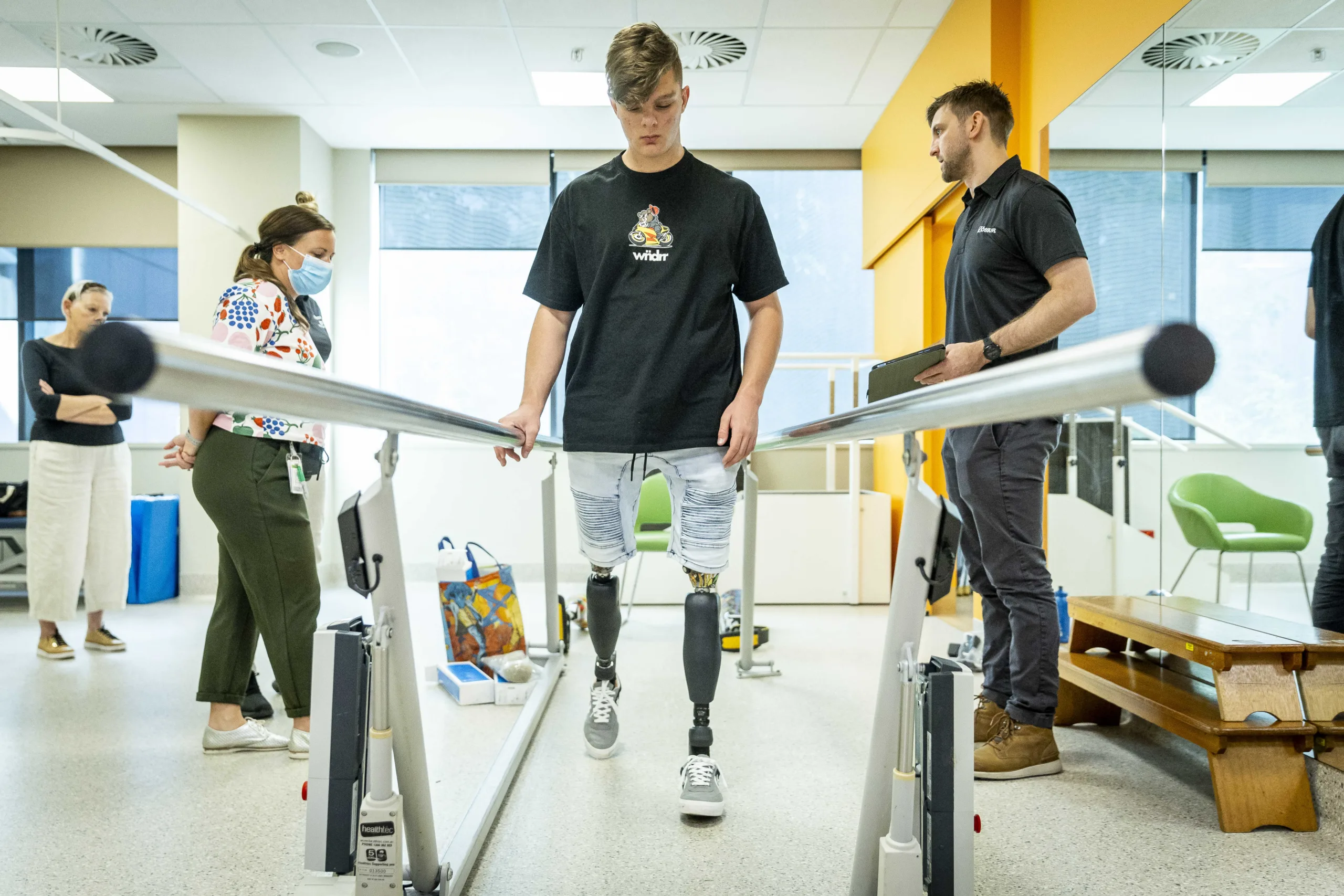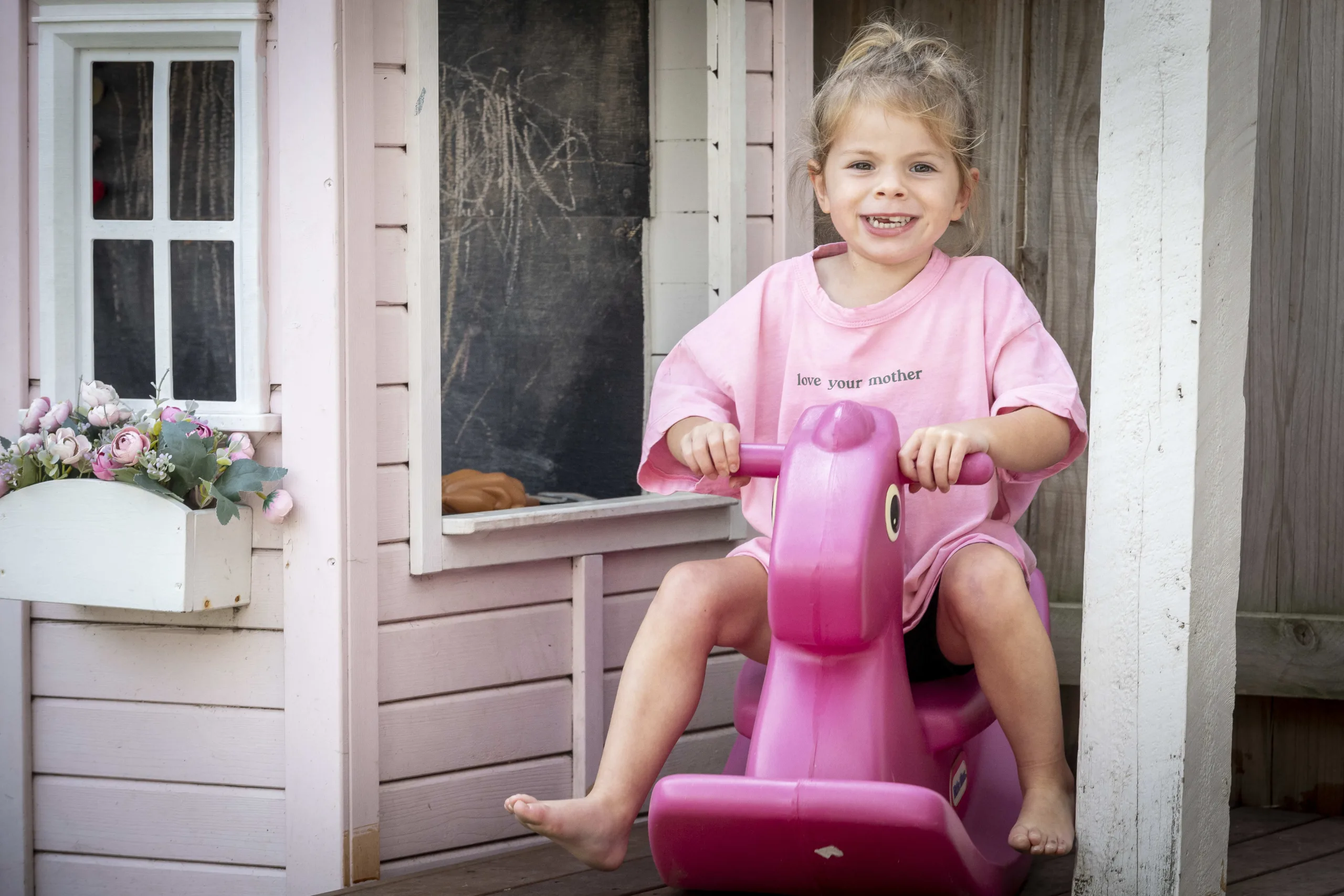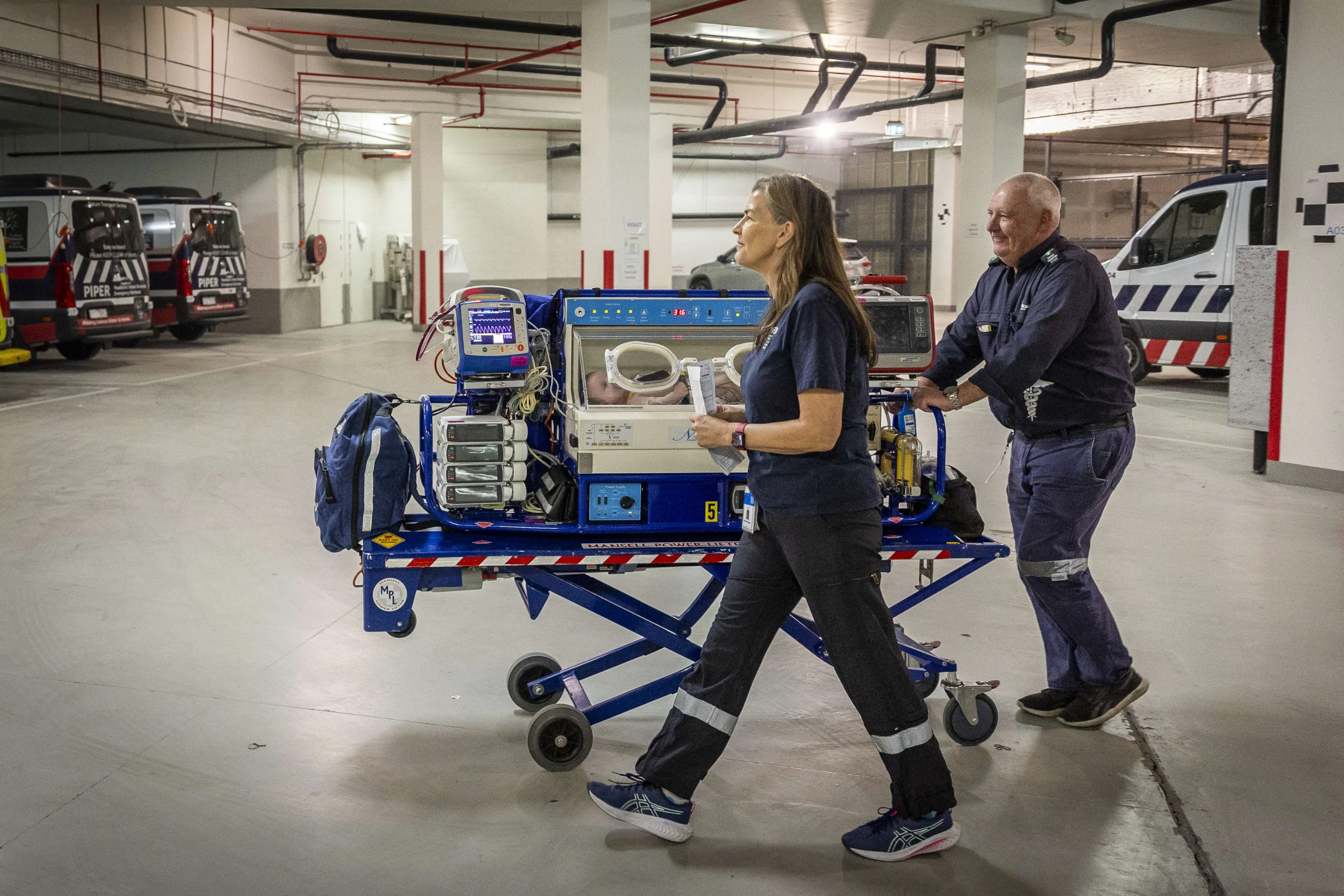
‘Wacky’ way to save Noa’s leg
When a surgeon told Noa he wanted to try “something wacky”, he wasn’t kidding. After removing Noa’s leg tumour, surgeons rotated her foot and lower leg 180 degrees and attached it to her upper leg. Noa’s ankle is now her knee joint, so she can move her foot in any direction to manoeuvre her new […]
When a surgeon told Noa he wanted to try “something wacky”, he wasn’t kidding.
After removing Noa’s leg tumour, surgeons rotated her foot and lower leg 180 degrees and attached it to her upper leg.
Noa’s ankle is now her knee joint, so she can move her foot in any direction to manoeuvre her new custom-made prosthetic leg with precision.
“It’s really cool, but a little bit strange,” the 12-year-old said.
The surgery, called a Van Nes rotationplasty, took 13 hours at the Royal Children’s Hospital in November.
“I can feel my entire foot and I can feel most of my leg, and I can wiggle my toes, and I can move my foot around in any direction,” Noa said.
The sheer ingenuity of the operation is not lost on Noa’s mum, Dalia Ben-Galim.
“It was introduced to us by the surgeon as, ‘I’m going to tell you something wacky, but kind of roll with me until the end’,” she said.
“And what they do is pretty amazing.”
The Malvern family’s ordeal began early last year, after Noa’s right knee started feeling sore.
By July, doctors at the RCH diagnosed osteosarcoma, an aggressive form of bone cancer, in Noa’s femur.
The year 7 student has been having “pretty brutal” chemotherapy since, which thankfully ends in mid-April.
Ms Ben-Galim said as soon as Noa woke after the operation, she was able to wiggle her toes, which gave the surgeons cause for celebration.
“It was pretty unbelievable,” she said.
“The surgical team obviously have done a lot of delicate work in putting her leg together and reconstructing it, and so wiggling her toes and having the blood supply to her foot is a really big indicator of the surgery’s success.”
RCH physiotherapist Estelle Johnson said there were several advantages to Noa’s surgery over a traditional amputation.
“If she wasn’t to have it and they just did an amputation that was quite far up the thigh bone, femur bone, she’d have a really, really short stump, which means walking is really difficult because you have to use a lot more energy to sort of drive and push the prosthetic,” she said.
“And it also means that from a prosthetic fitting point of view, it’s much more difficult to keep the prosthetic holding on.”
Ms Johnson said that with more practice Noa would be able to achieve her goal of returning to playing netball.
“Kids with this type of amputation, they run, they jump, they play sports,” she said.
“Noa’s a very determined little girl, and from the get-go she’s always been very positive around all the challenges that she’s faced.”
Ms Ben-Galim said Noa’s progress with her prosthetic leg in only her first month was amazing.
“We can see how she will be able to be independent and mobile and able to do everything all of her friends are doing at school and on the weekends,” she said.
“And so it gives us a lot of hope for the future.”
Written by Jen Kelly
Photos by David Caird
Published in the Herald Sun 28 March 2024






